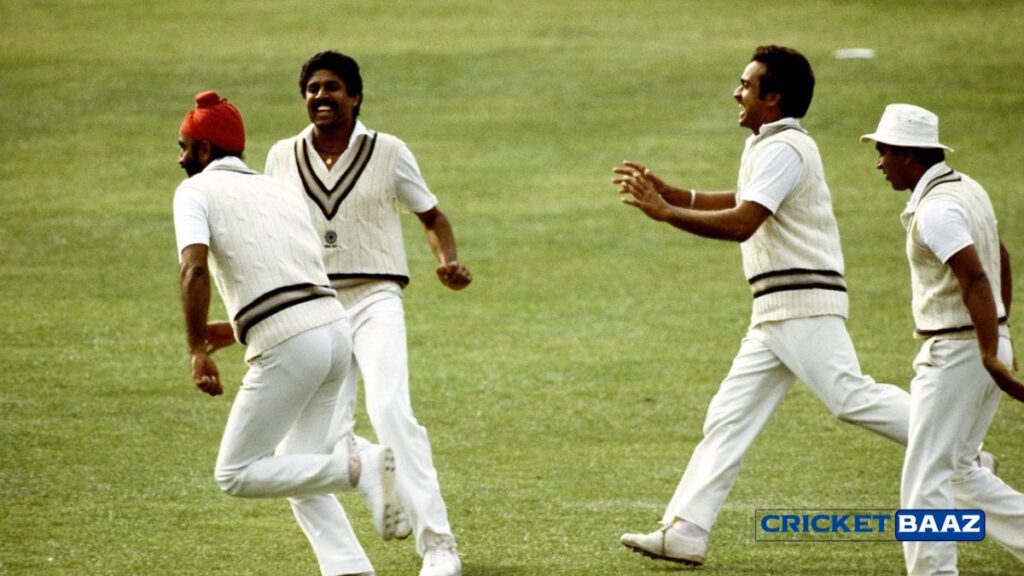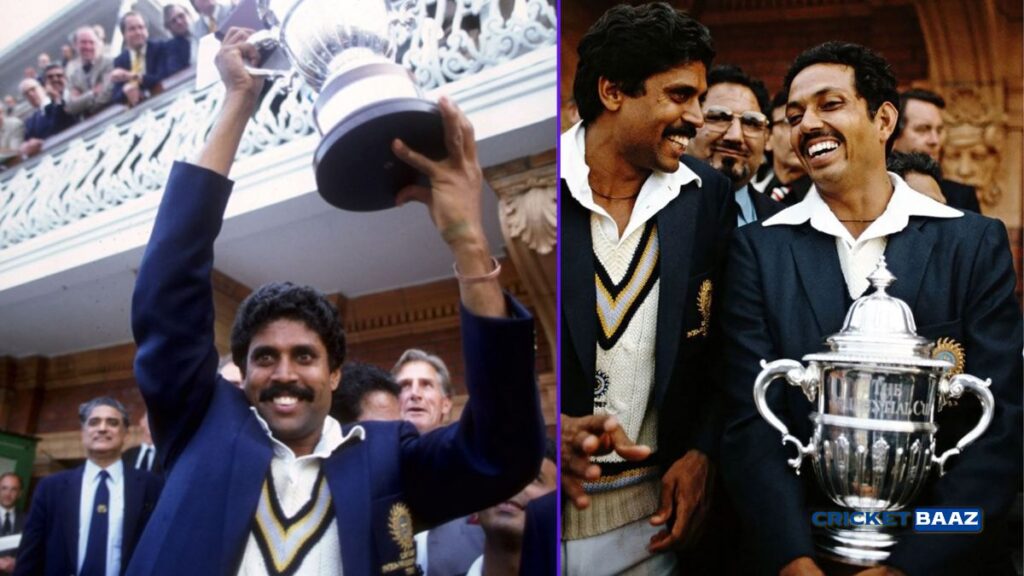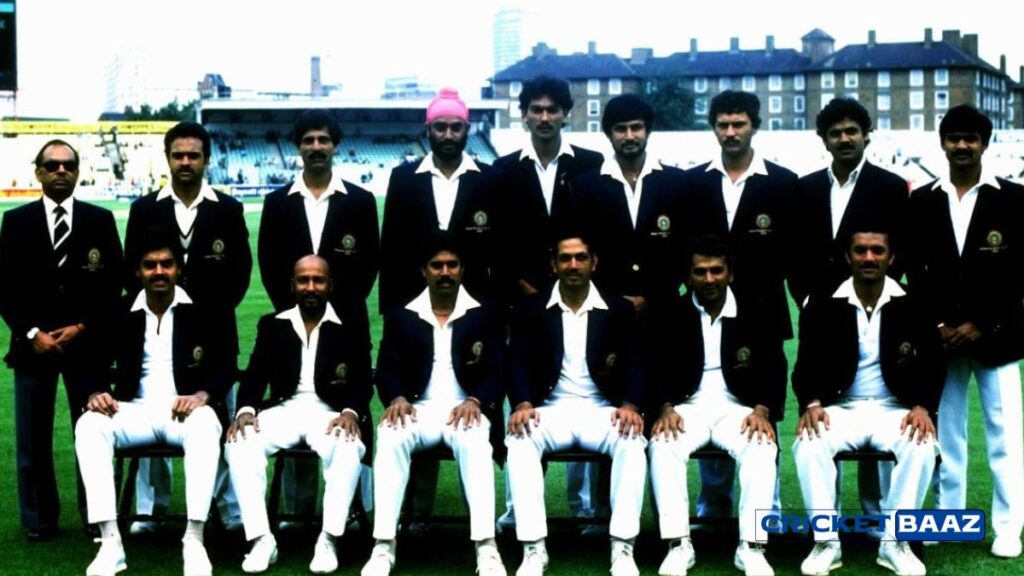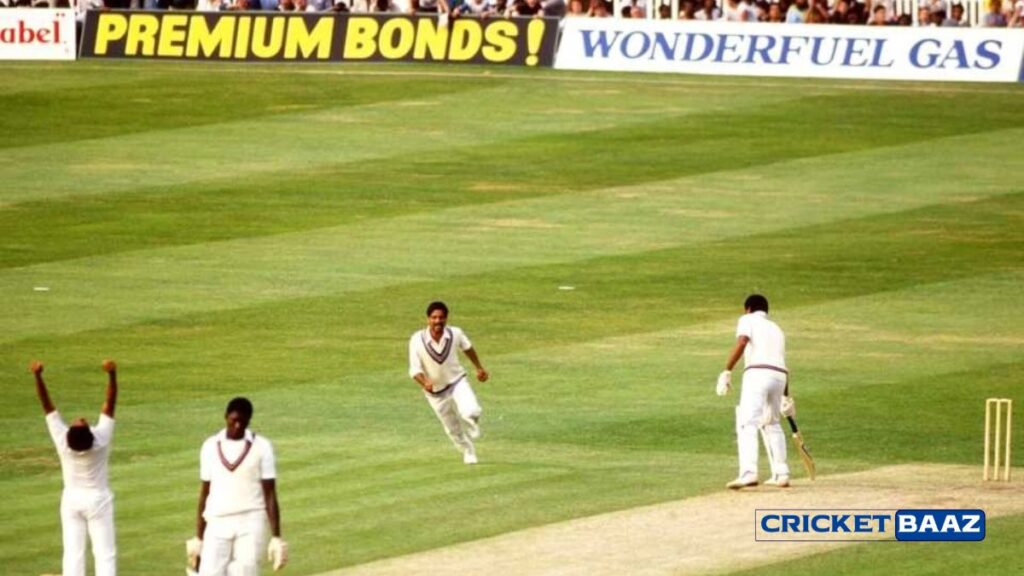The 1983 Cricket World Cup final is etched in the memory of every Indian cricket fan. On June 25, 1983, at Lord’s Cricket Ground in London, India defeated the mighty West Indies to claim their maiden World Cup title. This moment marked a turning point in Indian cricket history, inspiring generations and transforming cricket into a religion in India.
The Background: David vs. Goliath
India entered the tournament as underdogs, with little hope of progressing beyond the group stage. The West Indies, on the other hand, were the reigning champions, having won the first two editions of the World Cup in 1975 and 1979. They boasted a fearsome lineup, including legends like Vivian Richards, Clive Lloyd, and a menacing pace attack featuring Malcolm Marshall, Andy Roberts, and Michael Holding.
India’s journey to the final was nothing short of miraculous. Under the leadership of Kapil Dev, the team showed remarkable grit and determination, defeating stronger teams like Australia, England, and Zimbabwe. Kapil’s unforgettable 175 not out against Zimbabwe in a must-win game remains one of the greatest innings in cricket history.
The Build-Up to the Final

By the time India reached the final, the team had already captured the imagination of cricket fans back home. However, few believed they could beat the West Indies. The Caribbean team had steamrolled their opponents throughout the tournament and were heavily favored to complete a hat-trick of World Cup wins.
The Toss and Indian Batting Struggles
West Indies captain Clive Lloyd won the toss and elected to field first, a decision backed by their formidable bowling attack. India’s innings began cautiously but soon ran into trouble. The West Indian bowlers exploited the overcast conditions, making life difficult for the Indian batsmen.
India’s openers, Sunil Gavaskar and Krishnamachari Srikkanth, failed to provide a strong start. Srikkanth’s brisk 38, including some exquisite strokes, was the only notable contribution at the top. The middle order struggled to cope with the relentless pace and accuracy of the West Indian attack. Wickets fell at regular intervals, and India was bowled out for a modest 183 in 54.4 overs.
The Defending Champions Begin Their Chase
Chasing 184, the West Indies were expected to cruise to victory. However, India’s bowlers had other plans. The opening spell by Balwinder Sandhu set the tone when he bowled Gordon Greenidge with an inswinger that stunned the crowd.
The turning point came when Kapil Dev took a stunning running catch to dismiss the dangerous Vivian Richards. Richards, who looked in sublime touch, had scored a quickfire 33 and seemed to be taking the game away from India. Kapil’s catch remains one of the most iconic moments in cricket history, showcasing his athleticism and leadership under pressure.
A Spirited Bowling Performance
India’s bowlers, including Madan Lal, Roger Binny, and Mohinder Amarnath, maintained relentless pressure. They exploited the conditions expertly, varying their lengths and movement. Madan Lal’s three wickets and Amarnath’s economical bowling proved crucial.
Also Read: The Greatest Cricketers of the Modern Era
The West Indies’ lower order crumbled under the weight of expectations and tight bowling. Amarnath’s match-winning spell earned him the Player of the Match award. He claimed three vital wickets, including the final one, to seal India’s historic win. The West Indies were bowled out for 140, handing India a 43-run victory.
Celebrations and Impact

As Amarnath trapped Michael Holding lbw, the Indian team erupted in joy. Kapil Dev lifted the World Cup trophy on the iconic Lord’s balcony, a moment that symbolized the dawn of a new era for Indian cricket. The victory was celebrated across India, with fans taking to the streets in jubilant processions.
The 1983 World Cup win instilled belief in Indian cricket. It showed that an underdog team could achieve greatness through teamwork, resilience, and self-belief. Cricket’s popularity soared in India, eventually making it the most-followed sport in the country.
Legacy of the 1983 World Cup

The victory laid the foundation for India’s cricketing dominance in the decades to come. It inspired a new generation of cricketers, including legends like Sachin Tendulkar, Rahul Dravid, and Sourav Ganguly. The success also boosted the Board of Control for Cricket in India (BCCI), helping it become the powerhouse of world cricket.
Recent Updates and Commemorations
In recent years, the 1983 triumph has been celebrated through various mediums. The Bollywood film “83,” starring Ranveer Singh as Kapil Dev, brought the story of India’s World Cup win to the silver screen. The film captured the emotions and struggles of the players, introducing the historic moment to a younger generation.
Several players from the 1983 squad, including Kapil Dev, have been honored with awards and recognition for their contributions to Indian cricket. The victory remains a source of pride and inspiration, reminding fans of the power of teamwork and perseverance.
Key Takeaways from the 1983 World Cup Final

- Teamwork Over Individual Brilliance: India’s win was a collective effort, with contributions from both batsmen and bowlers.
- Leadership Under Pressure: Kapil Dev’s calm and decisive captaincy played a pivotal role in guiding the team to victory.
- Underdog Spirit: The triumph showed that determination and self-belief could overcome even the strongest opponents.
FAQs About the 1983 World Cup Final
- Why is the 1983 World Cup final significant?
- The 1983 final marked India’s first-ever World Cup win, defeating the two-time champions West Indies. It transformed cricket into the most popular sport in India.
- Who was the captain of the Indian team in 1983?
- Kapil Dev was the captain of the Indian team during the 1983 Cricket World Cup.
- Where was the 1983 World Cup final played?
- The final was played at Lord’s Cricket Ground in London, England.
- What was India’s score in the final?
- India scored 183 runs in 54.4 overs.
- Who was the Player of the Match in the final?
- Mohinder Amarnath was awarded the Player of the Match for his all-round performance, including three crucial wickets.
- What was the turning point in the final?
- Kapil Dev’s running catch to dismiss Vivian Richards is considered the turning point of the match.
- How many runs did the West Indies score in the final?
- The West Indies were bowled out for 140 runs.
- Which Indian bowler took the most wickets in the final?
- Madan Lal and Mohinder Amarnath each took three wickets in the final.
- What impact did the 1983 World Cup win have on Indian cricket?
- The win boosted cricket’s popularity in India, inspired future generations of players, and strengthened the BCCI’s influence in world cricket.
- How is the 1983 World Cup win celebrated today?
- The victory is celebrated through films like “83” and various commemorative events, with players from the squad often honored for their achievements.

